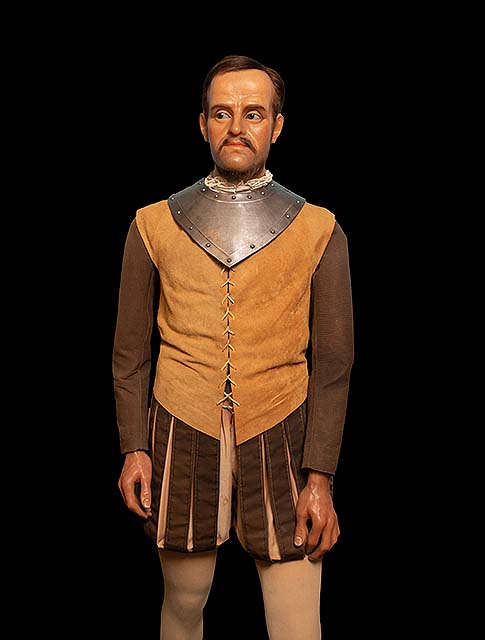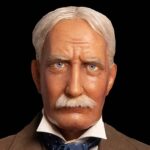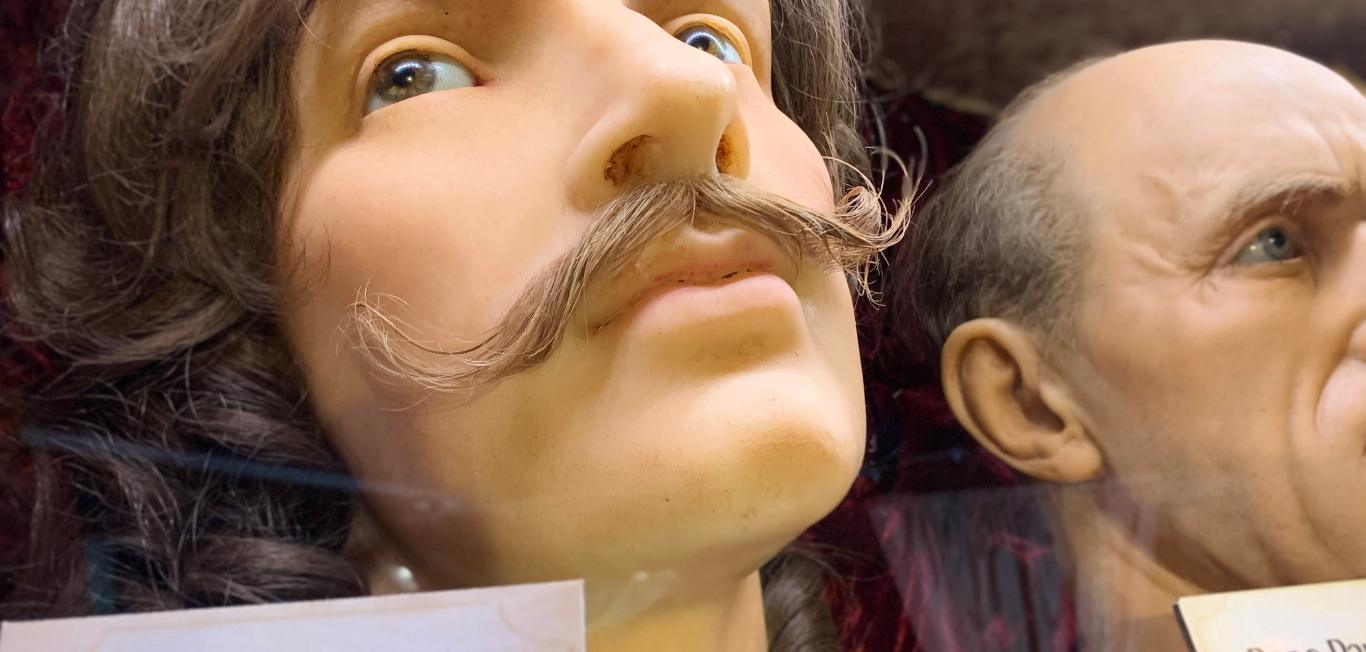About Pedro Menéndez
Pedro Menéndez de Avilés and St. Augustine are synonymous. He was a prominent figure in the age of exploration and conquest, most renowned for his role in establishing one of the first permanent European settlements in the New World. Pedro Menéndez’s biography dictates his achievements as a Spanish officer and conquistador, leaving an indelible mark in world history. His conquering of Florida was under the rule of King Philip II of Spain, who tasked Menéndez with claiming Florida for Spain and preventing the French from colonizing the territory. Pedro Menéndez de Avilés was successful in this task. During his journey through Florida, he made contact with the natives and set up several forts in key locations to protect the Spanish crown’s new land. Pedro Menéndez de Avilés remains significant to Floridian and American history for his contributions to the New World.
Early Years
Pedro Menéndez de Avilés was born on February 15, 1519, in Avilés, Spain. He was born into a noble family but would not enjoy much inheritance, as he may have had up to 19 siblings. In his childhood years, Pedro Menéndez’s father died and his mother remarried, so he was sent to live with a family member who would take care of him and oversee his education. By the age of 14, he ran away and began a life that would play a pivotal role in the colonization of Florida. Pedro Menéndez’s biography truly begins at the age of 19. He was appointed Captain of the Indies fleet after proving himself an esteemed leader when he captured two French frigates and drove away a third while captaining his own vessel.
Menéndez’s growing reputation was not liked by many. He made numerous enemies at the beginning of his career, which eventually led to imprisonment in 1563. Accused of accepting bribes and smuggling, he was jailed by the Casa de Contratación. Two years later, Menéndez was freed and regained royal favor, which tasked him with preventing the French from colonizing what was considered Spanish land.
The developmental experiences in his childhood years and early career were critical to the navigator, conquistador and explorer that Pedro Menéndez de Avilés would become.
DID YOU KNOW?
He was appointed Captain of the Indies fleet after proving himself an esteemed leader when he captured two French frigates and drove away a third while captaining his own vessel.
Personal Life
The personal life of Pedro Menéndez was filled with trials and triumphs that shaped his journey from a young boy to a renowned explorer and conquistador of the New World. Pedro Menéndez de Avilés was born into a noble family in the kingdom of Asturias, Spain. His early years were spent navigating personal challenges, as his father passed away while he was still a young boy. After the passing of his father, he was sent to live with a relative who agreed to oversee his education, but the relationship between Menéndez and his guardian was argumentative, prompting young Menéndez to run away. Menéndez’s motivation to run away was to find adventure.
His growing need for adventure led him to a career in the Spanish navy. By the age of 19, Pedro Menéndez enlisted in the military and was appointed as an officer. Menéndez served in a war against France, defending Spain’s maritime commerce from French corsairs. His time at sea was welcomed, and instrumental in sharpening his leadership skills and laying the foundation for his future venture as a naval captain.
Interesting Facts About Pedro Menéndez de Avilés
Pedro Menéndez de Avilés played a significant role in the exploration and colonization of Florida. He made several transoceanic voyages from Spain to Florida, carrying several Spanish settlers to St. Augustine in an effort to drive out the French Huguenots and establish the city as Spanish territory. Pedro Menéndez’s life as a conquistador was filled with challenges and victories. Here are some facts about Pedro Menéndez:
In 1565, Pedro Menéndez established the city of St. Augustine in Florida, which is recognized today as the oldest city in America. In recognition of his successful colonization of Florida for Spain, Menéndez was appointed as Florida’s first Spanish colonial governor.
Although Pedro Menéndez was born into a noble family, he still faced adversity. He was among the youngest of almost 20 children and experienced the death of his father at an early age. Due to his father’s early death, Menendez was sent to live with a guardian. When he was 14, he ran away in search of adventure. His eagerness to explore and his hardships without his father contributed to his determination and resilience as a leader.
Pedro Menéndez is most notable for exploring and establishing St. Augustine, Florida. He was tasked by King Philip II to drive out the French Huguenots and secure the territory as Spanish land. His success in St. Augustine led Menéndez to continue his colonization into southeastern Florida.
Pedro Menéndez’s voyages were not only undertaken to colonize Florida. Menéndez was also motivated to lead these voyages as he had a personal matter to resolve — finding his son, Juan. Juan Menéndez Marqués was the admiral of La Concepción, the flagship of a new Spanish fleet. Off the coast of South Carolina, on the latitude of Bermuda, Marqués’ ship was caught and destroyed in a hurricane. There were no known survivors as all crew members vanished in the wreck.
There are many risks and challenges to transoceanic voyages, especially in the 1500s. After the successful establishment of St. Augustine, Pedro Menéndez and his men began their journey back to Spain. Unfortunately, due to the perils of the sea, many of his ships crashed in transit.
DID YOU KNOW?
Pedro Menéndez is most notable for exploring and establishing St. Augustine, Florida. He was tasked by King Philip II to drive out the French Huguenots and secure the territory as Spanish land. His success in St. Augustine led Menéndez to continue his colonization into southeastern Florida.
What Is This Individual Most Known and/or Famous For?
Pedro Menéndez’s biography is a tribute to his success as a leader and conquistador. His significant role in the colonization of Florida and his achievement as the founder of the oldest city in the nation secured an enduring legacy for the Menéndez de Avilés name. In 1565, he embarked on an arduous journey with a fleet of 11 ships, 2,000 men and a mission to remove the French Huguenot settlers and establish St. Augustine, Florida, as Spanish territory. In recognition of his success, Menéndez was named Florida’s first governor. He was the quintessential conquistador, leading his armada with intrepid exploration, boundless energy, and unwavering loyalty to the crown. Pedro Menéndez is forever enshrined as an icon in Florida and New World history and an indispensable figure in the Age of Exploration and colonization.
Pedro Menéndez de Avilés Claims Florida for Spain
One of the most renowned events during the discovery of the New World was the establishment of Florida as a Spanish colony. Much of Pedro Menéndez’s biography notes his efforts to establish the settlement of St. Augustine, America’s oldest city. His maiden voyage to Florida was in 1565, with an armada of 11 ships and over 2,000 sailors, as well as their families. On September 8, 1565, Pedro Menéndez assigned the name St. Augustine to the settlement, not only officially marking the founding of the city but declaring it Spanish territory.
Pedro Menéndez was first sent to the city of St. Augustine by King Philip II of Spain to drive out the French Huguenots and prevent them from establishing colonies in Florida. Menéndez carried out this task with great success. His determination led to the entirety of Florida being secured as a region for the Spanish crown. In recognition of this accomplishment, King Philip II appointed him governor of Florida.
The establishment of Florida as a Spanish colony created an enduring legacy for both St. Augustine and Pedro Menéndez. His determination and perseverance to claim Spanish land in the New World is still honored today in America’s oldest city.
DID YOU KNOW?
His determination and perseverance to claim Spanish land in the New World is still honored today in America's oldest city.
How He Lived Out the Remainder of His Life
In 1567, Pedro Menéndez returned to Spain, satisfied that he had fulfilled his contract with King Philip II. In October of that year, he was appointed governor of Cuba. For the next seven years, Menéndez continued his transatlantic voyages. His return to Florida was motivated by a desire to bring more Spanish settlers to continue colonizing the territory, as well as to continue the search for his son, Juan Marqués. Unfortunately, Menéndez never found him. As he continued the expansion of Spanish power throughout South Florida, he made contact with local tribes, negotiating for things he was in need of, such as translators for his journey to Cuba. Pedro Menéndez returned to Spain in 1572 and died from typhus two years later in Santander, Spain on September 17, 1574. He was laid to rest in Santander, Spain and remained there until 1924.
Three hundred and fifty years after the death of Pedro Menéndez, there was a significant development regarding the location of his final resting place. Menéndez’s remains were removed from his original casket and he was interred in a wall crypt within the Church of San Nicolás, in his birthplace, Avilés, Spain. His original casket was then gifted to the city of St. Augustine, where it has been preserved and is on display at the Mission Nombre de Dios Museum.
FAQs
How many ships did Pedro Menéndez have?
Pedro Menéndez de Avilés had a fleet of 11 ships when he set sail for Florida in 1565 to establish the settlement of St. Augustine and drive out the French colonists.
Why did Pedro Menéndez come to Florida?
Pedro Menéndez de Avilés came to Florida in 1565 with the primary mission of establishing a Spanish presence in the region and driving out the French colonists. He was sent by King Philip II of Spain to remove the French settlers, particularly the Huguenots, who had established a colony in Florida.
Where did Pedro Menéndez travel?
Pedro Menéndez traveled to many places. He spent time in South America establishing territory for the Spanish crown, but his most notable expedition was to Florida and its surrounding areas, what are known today as Georgia, South Carolina and Cuba.
Was Menéndez in the Canaveral National Seashore area?
While making his way south to Cuba, Menéndez’s men captured a group of Frenchmen and left them as prisoners at the Spanish fort in Cape Canaveral.








